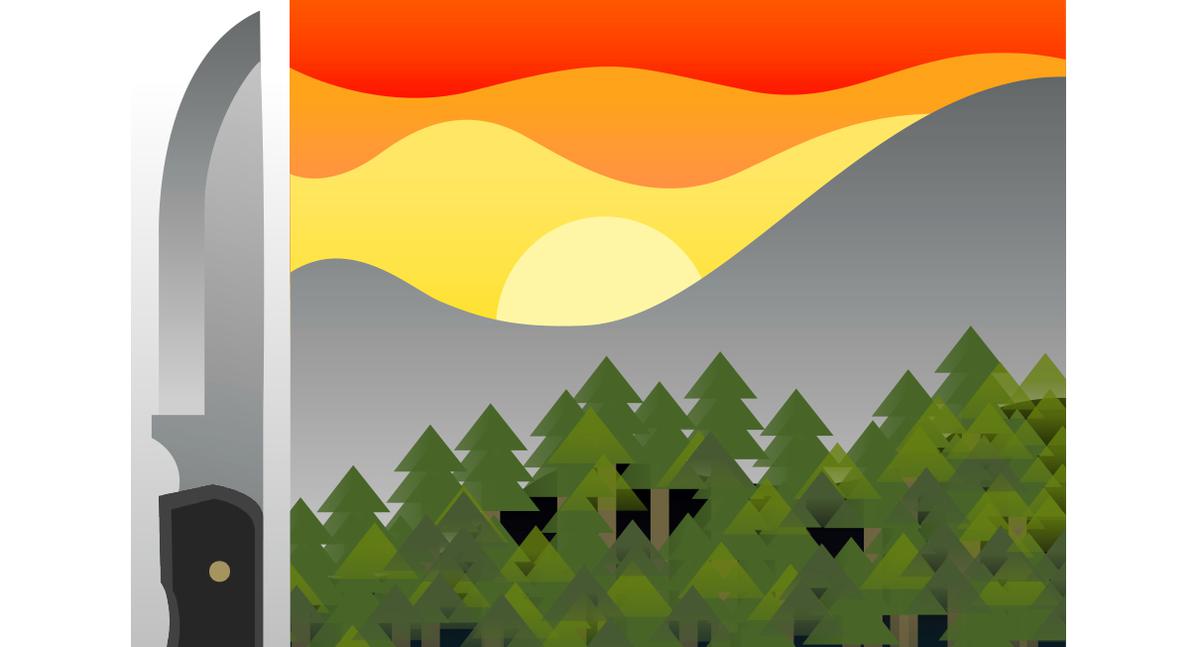If you’ve ever done any sort of repairwork, even basic stuff, you’ll know that having the right tool for the job makes that job a whole lot easier. If you haven’t had the pleasure of finding this out for yourself, try removing a screw with a pair of scissors. This doesn’t mean the task will be impossible, it just takes so much more effort. While any knife is better than no knife, having the right one for the job is going to make life so much easier.
EDC

Unless you’re going into a warzone, or have a reasonably high expectation of getting attacked in the line of duty, a fixed blade might not be the best idea here. A good folding knife is going to be your best friend.
Ok, so for EDC, a folder is going to shine. The next question is going to be “how long?” Since it’s likely going to be carried inside your pocket, You might want to consider a blade that’s around the three-inch mark. This means a reasonably compact package, while retaining enough steel to keep the blade useful. Pick your favorite locking mechanism from a brand you trust, and you’re set.
Now we’ve narrowed it down further to a three-inch long folder. What about blade shape? While a tanto, recurve, or even karambit might look totally bad-ass, they were made for particular purposes. The Americanized tanto has a lot of meat behind the tip, allowing it to stand up to stabbing. The extra edge by the top however, makes it more difficult to use for simpler tasks, such as slicing a burger, or slicing a tomato.
Recurves can be quite effective, giving you a large belly on which you can actually slice, but this is quite a pain to sharpen. I prefer a simple drop point or spear point for all-around utility.
What about blade thickness? That’s a factor as well. Generally, the lighter the task, the thinner a blade you can get away with. The thinner the blade, the lighter the knife. So, I always aim to
get the thinnest knife possible. The knife I carry has a 3 mm-thick blade that’s a little on the meaty side. I have carried much thinner on a regular basis, and have not regretted it. I don’t get many chances to baton wood in my daily life, so a thin blade that’s better suited to slice food and open boxes is much preferred.
What about blade material? I’m all for cheaper stainless steels on my EDC blades. It keeps the cost down, is easy to sharpen, and keeps an edge well enough. I spend a little time caring for my blade every week, and I’m set. Easy.
CAMPING

For camping, you have a few different needs. A small knife is still preferred, since it’ll likely be carried a lot, but the beating it’ll take will require a more robust blade. Fixed blades shine in this role, though it’s easy to go overboard.
Stick with a shorter knife. For general tasks,anything over 4 inches is a little much. You giveup weight and the ability to do detailed work such as carving tent pegs, or food prep, and if you’re going to a place where you’ll need to clear brush or chop wood, bring a machete or hatchet along for that.
The same drop-point or spear point will be great for this use as well, since they’re generalists, and you’ll be doing a lot of general cutting at camp. If for whatever reason you’ll need to pry or even heaven forbid, dig, you’ve got a knife that can help you there, just be careful not to injure yourself or wreck your blade.
Thickness will have to go up a bit. I’ve used the 3 mm folder for some medium-weight camping tasks before, and it does okay. A thicker blade will do great to split wood, and has the weight to come down hard on something you need to chop, but don’t go too thick and lose the ability to do fine work. A short blade maybe about 5 mm might be an okay choice for most jobs.
As for material, I go with carbon steel for my outdoor knives. This makes sharpening easy, lets me use a firesteel, and is plenty tough. Sure, I need to be careful to clean the blade, but you should do that anyway. The benefits outweigh the costs by far.
GENERAL THINGS TO AVOID
I’m not fond of serrated edges. They’re hard to sharpen, the points on the serrations curl, and they catch and snag. Keep your plain edge sharp, and it’ll do the job. Leave the serrations on your bread knife.
Strange blade shapes are off the list as well. While there is a purpose to the karambit, for example, it needs specialized training, and while it does a few tasks well, I’m wouldn’t want to attempt to make dinner with one.
Blade materials that aren’t steel aren’t high on my list either. While titanium takes a heck of an edge, and holds it, getting that edge back is impossible without patience and diamond stones. Ceramics are likewise terribly sharp, beautiful, and hard, but are prone to chipping and shattering, and require a different technique to sharpen. Steel is still my bet.
I also tend to stay away from complicated locking systems and automatic knives. More moving parts mean more points of failure, and a pain to take apart and maintain. Keep it simple and be happy.
Also published in GADGETS MAGAZINE August 2017 Issue
Words by Ren Alcantara
